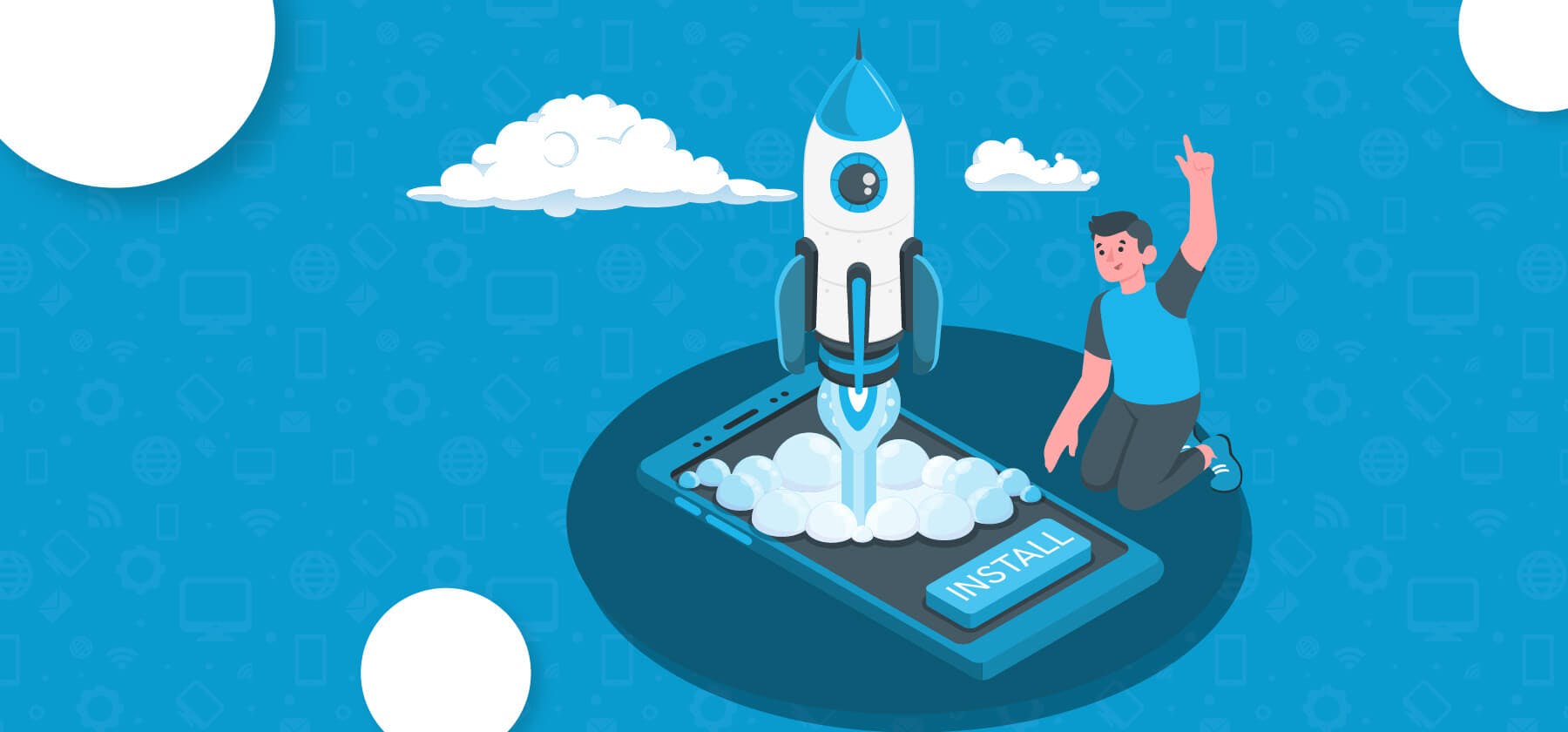This article covered the basics of cost per install advertising, including its advantages, best practices, and some of the best practices for cost per install campaigns.
You need to understand your ad spend relative to the revenue generated by your campaign while setting up a mobile app advertising campaign. You can use a variety of measurements, from cost per mille (CPM) to cost per install (CPI), to determine the price of an advertisement.
Although several business models impact the mobile app growth strategies, the preferred price metric for evaluating the effectiveness of marketing campaigns that drive app installs is the cost per install.
In this article, we'll learn about the cost per install advertising, including what it is, best practices, and some benefits it could have for your brand's marketing plan.
What is Cost Per Install (CPI)
The full form of CPI is Cost Per Install. It is the amount an advertiser pays a publisher each time a user clicks on a paid advertisement for their mobile app and installs it.
CPI is a well-known statistic, even though key performance indicators (KPI) can vary depending on their purpose. Pricing models like CPM, vCPM, or CPC are utilized for brand recognition and traffic-building strategies, whereas CPI is used only for mobile app installs.
When buying based on CPI, there are many important considerations to look for because each affects the cost per install pricing. The attributes of advertising platforms, geo area, platform (iOS or Android), ad type, size, and the time of year can all influence how much a CPI varies over time.
Factors that affect CPI
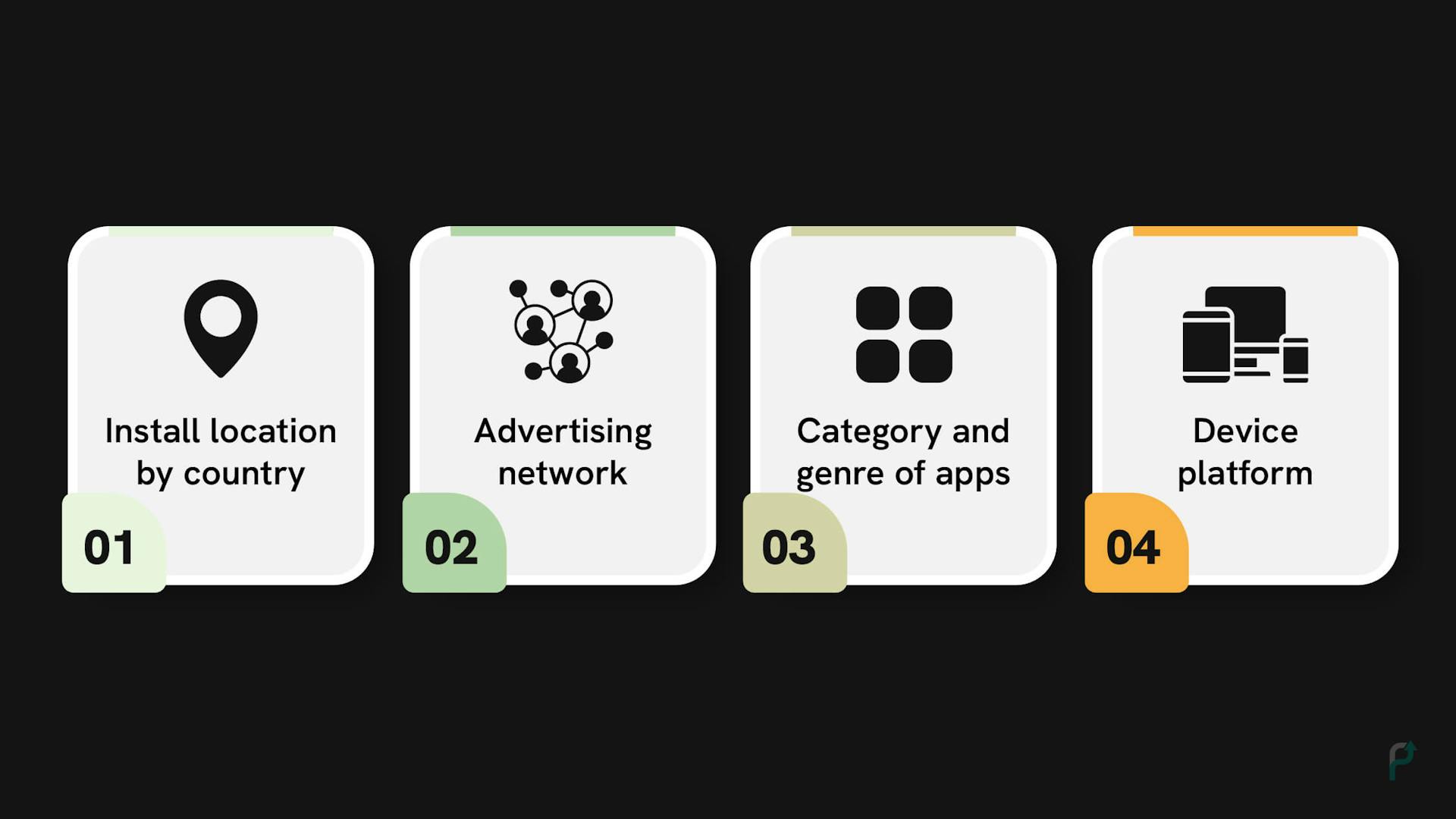 Factors that affect CPI
Factors that affect CPI-
Install location by country
Due to user behavior, market saturation, and purchasing power, CPI differs in each nation. While emerging economies have lower CPIs, developed countries with high smartphone usage and competition have higher CPIs. Therefore, while organizing app install campaigns and allocating funds for user acquisition costs, app developers and marketers should consider geography into account.
-
Advertising network
The cost of placing ads will differ according to the media source. For example, the CPI for in-app ad networks may be distinct from the CPI for social media platforms or Apple Search Advertising.
-
Category and genre of apps
Your app's genre and category can enormously impact the CPI as a whole. For instance, compared to other app categories, mobile games often have higher CPIs, and some gaming genres, such as casino games, can have higher CPIs than usual.
-
Device platform
Apps for iOS and Android make different CPIs. The average CPI is higher for Apple users than for Android users, according to studies, because Apple users are more willing to pay for IAPs.
Understanding the CPI Formula and How to Calculate It
How to calculate Cost Per Install (CPI)
By dividing the total ad spend during a specific time by the number of new installs during that same time, you can calculate the cost per install. This clarifies the total amount spent on app installs.
The steps to calculate CPI are as follows:
-
Calculate your ad spend for a specified period
You can take the total of all the costs associated with in-app ads during a given time frame to calculate the total ad spend.
-
Quantify the number of app installs throughout the same period
The number of installs for a specific app might vary depending on various aspects. You can calculate the total number of installs after considering all relevant factors.
-
Divide total ad spend by the total number of new installs
Divide the ad spending by the number of new installs for a specific time frame. You can see the cost per app install here.
Here is the CPI formula to make things easier.
CPI Formula
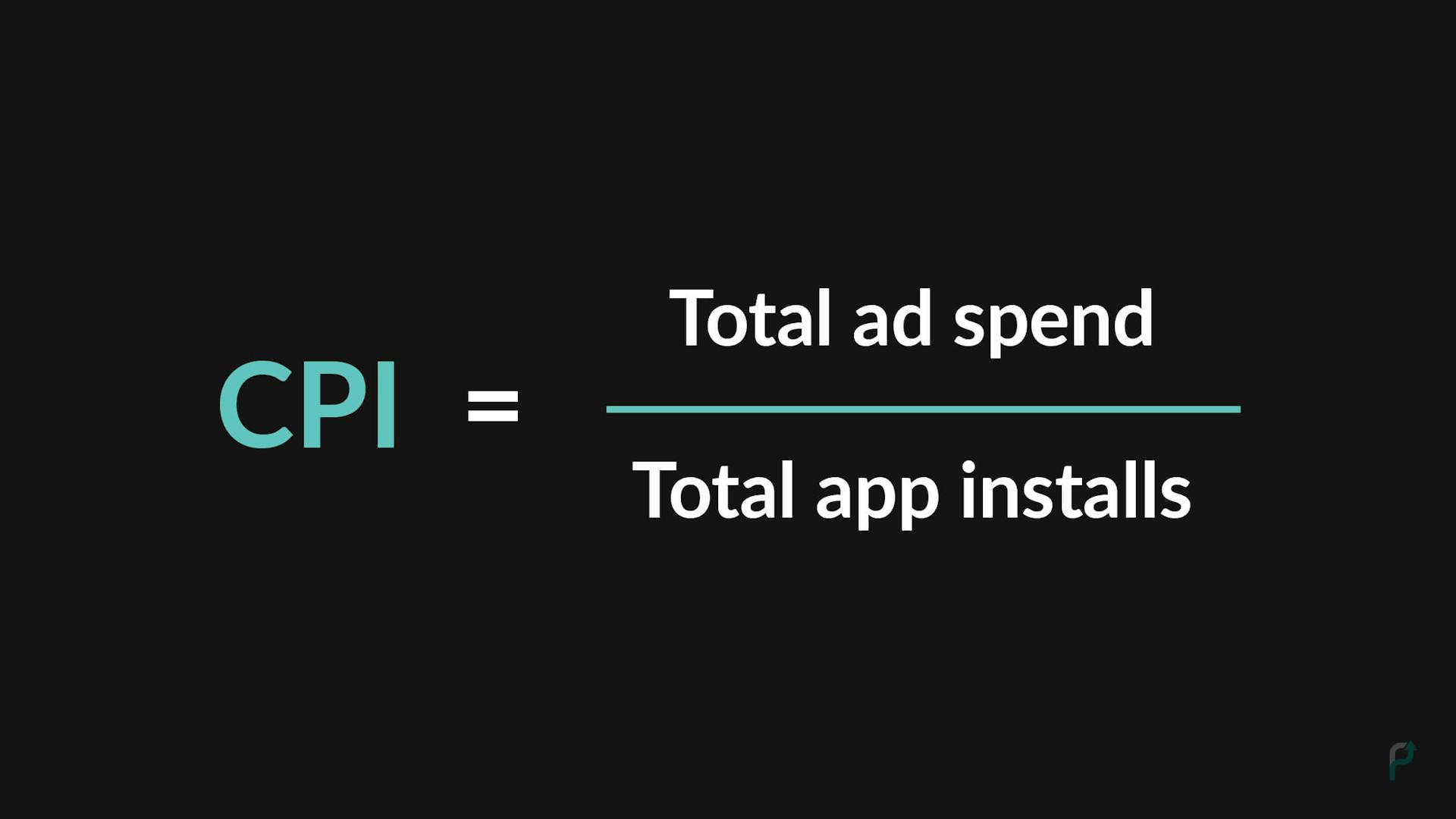 Cost Per Install (CPI) Formula
Cost Per Install (CPI) FormulaCPI = Total ad spend/Total app installs
For instance, a developer may spend $500 on advertisements for a gaming app on a mobile device, resulting in 260 installs. They could estimate the cost-per-install using the CPI formula: Cost-per-install: $500 / 260 = $1.92
Ready to Transform Your CPI Campaigns? Click here to Discover Proven Strategies!
What is a Good CPI
Different sectors, app types, marketing styles, and other factors will impact a good cost per install.
The CPI pricing model puts more emphasis on conversions than views or impressions because the advertiser only pays the publisher after the app install.
Costs-per-install are much higher because an app install has such a high value, especially compared to a straightforward ad impression.
Average Cost-Per-Install Statistics:
- Average mobile app CPI
- APAC: $0.93
- EMEA: $1.03
- LATAM: $0.34
- NAM: $5.28
- Facebook Ads CPI (2019): $1.04
- iOS app CPI Globally: $3.6
- iOS Games CPI: $4.3
- Android app CPI (Google Play market): $1.22
- Android Games CPI: $1.15
How to Lower CPI
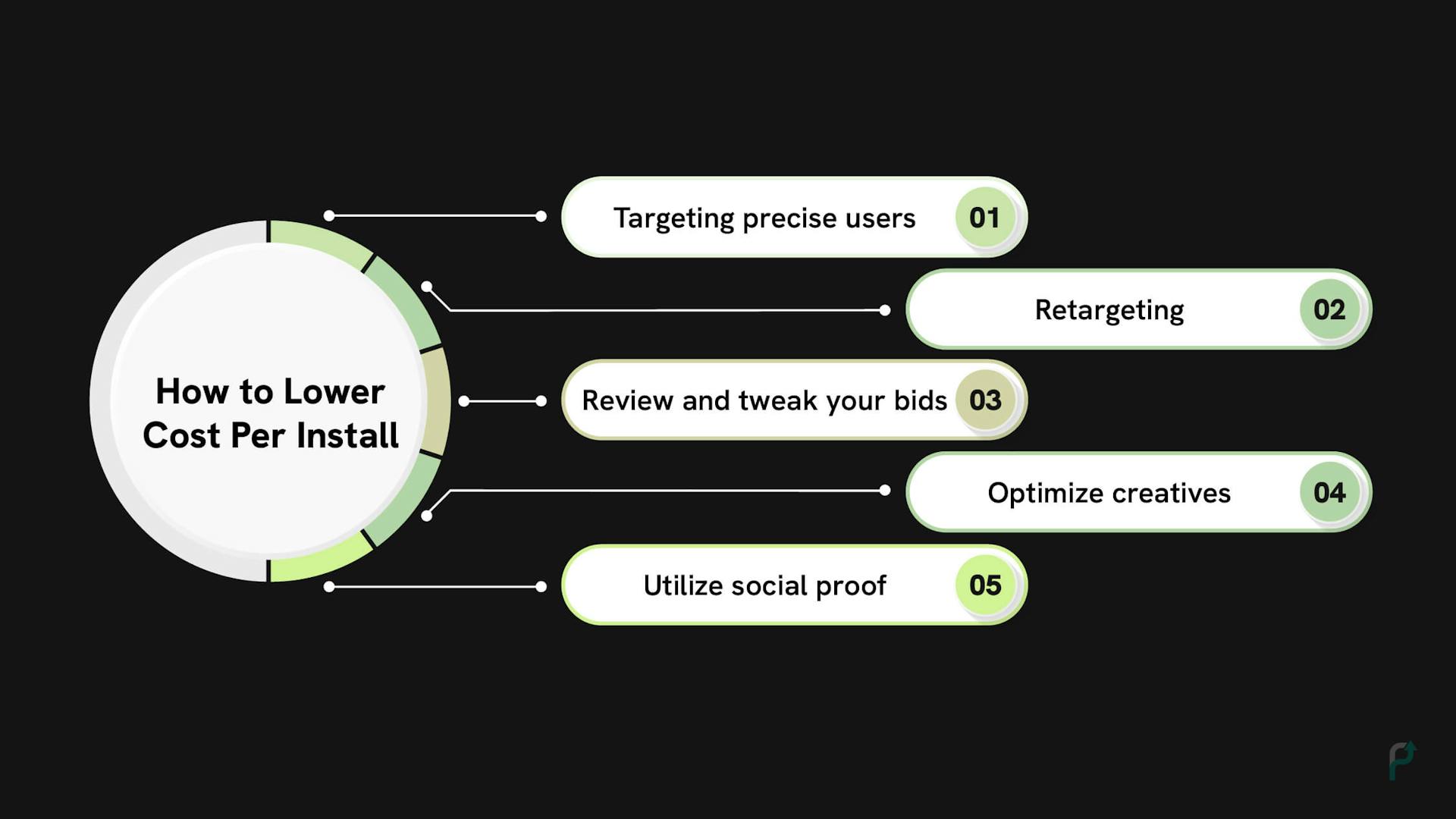 How to lower Cost Per Install
How to lower Cost Per InstallBusinesses can increase ROI and save costs by lowering CPI in mobile app advertising campaigns. Here are some ways how companies can reduce their CPI:
- Targeting precise users: Businesses can lower cost per install by focusing their advertising on audiences more likely to install the app.
- Retargeting: Businesses can target individuals who have already downloaded their app or visited their website with retargeting advertising. This is a practical approach for getting more app installs from users already acquainted with the brand.
- Review and tweak your bids: Businesses can optimize their ad spend for better ROI by monitoring CPI and adjusting bids accordingly. Setting the best bid price for various target audiences and ad placements entails reviewing data from the last campaigns.
- Optimize creatives: By experimenting with various versions of the ad text, images, and videos to select which ones perform best, businesses may optimize the effectiveness of their ad creatives. Besides, companies may boost the probability of app installs and lower CPI by creating engaging and relevant ads.
- Utilize social proof: People are more likely to take action if they see others behaving in a certain way, thanks to a psychological phenomenon called "social proof." By including positive reviews or user ratings, businesses can use social proof in their advertisements to increase the likelihood that users will download their apps.
Key Benefits of CPI at a Glance
-
Monitor the cost and efficiency of your ads
You get what you pay for is the main benefit. If you want to improve the number of app installs, you can adjust the CPI to achieve more installs from a particular medium. Alternatively, you might modify the pricing to hit your return on ad spend (ROAS) targets for a specific channel.
-
Improve your rank in mobile app stores organically
Spending a lot on paid acquisition may increase downloads. Also, your app's ranking will improve, boosting the visibility of the app. Additionally, CPI can enhance the brand awareness of your app, increasing install potential and popularity.
-
It carries less risk for advertisers than CPM
A high level of user intent is required to install an app. By paying for users genuinely interested in their app and more inclined to interact with it, advertisers are getting value for their money. In other words, this price strategy reduces the time, money, and marketing resources spent.
But, cost per install benchmarks are only one statistic you may use to gauge your marketing plan. In addition to the CPI, several other measures might help assess the actual effectiveness of your marketing effort.
Reap the benefits of CPI advertising now!
Let's look at some more metrics.
Why is Pay Per Install better than paying for clicks or impressions
In pay per install pricing model, the ad network bears all the risk, not the advertisers. This is a performance-based pricing strategy, which means that advertisers pay only for results and that there is significantly less risk than with a pay-per-click specific impression approach.
Why does there seem to be less risk
Well, primarily because click and impression-based payout models force marketers to pay every time people see or click their ads - even if they don't necessarily download the app and sign up as users. As a result, unlike PPI advertising, where they only pay for actual installs, marketers may spend money on those who never become users.
Additionally, pay-per-install campaigns for apps have a payout for each install delivered by the campaign, and this payout can either be set or differ depending on DSPs and ad networks. App marketers often favor cost per install advertising campaigns since it bears less risk.
Understanding why PPI is one of the best pricing models available will be easier if you look at alternative price models. Of course, several pricing measures are better than PPI and require marketers to pay only when a specific activity takes place. Here are a few of them:
CPI vs CPM
What is CPM
CPM is a metric used to measure the cost per thousand impressions of an advertisement, which represents the number of times a target customer or website visitor would see the ad.
Since everybody can view an advertisement, but not everyone will install your app as a result of seeing one, CPM advertising costs are substantially lower, but they also offer less overall value for your money.
What differentiates CPI from CPM
CPI, refers to the price associated with installing a piece of software, a game, or an app, whereas CPM refers to the cost associated with every thousand ad impressions.
While CPM is a well-liked marketing metric for ad networks running banner advertisements, native ads, and hover ads, mobile app developers frequently use CPI marketing to acquire new users and boost installs.
CPI vs CPA
What is CPA
In a Cost Per Action (CPA) pricing model, an advertiser pays a publisher each time a user conducts a different activity. This can include downloading an app, but it can also involve subscribing to a newsletter or loyalty program or signing up for an email newsletter.
What differentiates CPA from CPI
CPA allows activities that take place after the installation, unlike CPI. Marketers who desire users to take actions further down the sales funnel sometimes prefer CPA.
Now let's talk about the cost per install advertising campaigns.
What is a Cost Per Install Advertising campaign
A CPI campaign is when advertisers run app install ads on several digital platforms to nudge users to download the promoted app from the developer. Because conversion is the main objective of this user acquisition campaign, payment is on app installs rather than how many people saw or clicked on the advertisement.
If you want to increase the user base and boost the visibility of your app, you need a cost per install advertising campaigns. With less risk and a higher ROAS, the advertiser can save money by this method.
But you should also consider the differences between Android and iOS users if you are launching a CPI campaign. Due to their exceptional purchasing power and location, iOS users spend more money than the average Android user (GDP countries, mostly).
In light of this, here are three things to be aware of while running an effective cost per install advertising campaign:
- Choose your target market first
- Understand your metrics and re-engage users
- Focus on post-installation activities
Best Practices for Cost Per Install Advertising
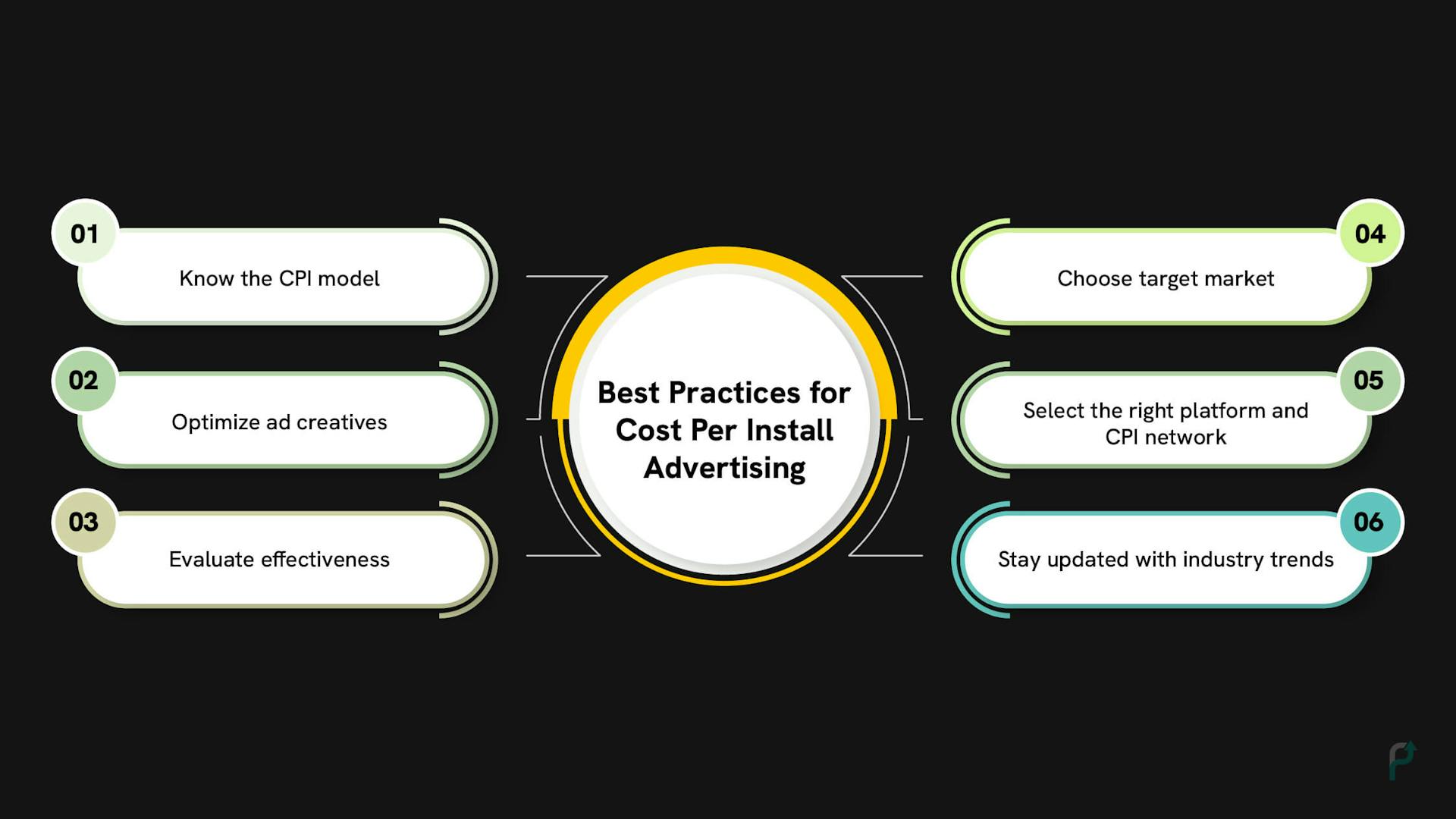 Cost Per Install Advertising: Best Practices
Cost Per Install Advertising: Best Practices-
Know the CPI model
Marketers may enormously raise the return on their estimates by fully understanding the CPI model. The performance-based model of CPI advertising is one of its most important benefits. Advertisers only pay when users download their app, so they can be sure they'll get their money's worth.
CPI targets a specific user base. Advertisers can target audiences based on demographics, context, and other benchmarks to ensure that the relevant people see their ads at the right time.
Advertisers can boost app downloads while cutting down on advertising expenditures by understanding the unique characteristics of the CPI business model and putting the best approaches for success into practice.
-
Optimize ad creatives
Cost per install advertising requires you to optimize your ad creatives. You may boost the app installs and maximize the performance of your CPI ad campaign by designing appealing and captivating ad creatives, persuasive copy, clear calls to action, and testing various ad creatives.
-
Evaluate effectiveness
Making data-driven decisions to optimize your campaigns for better results requires evaluating the performance of your cost per install advertising initiatives. You may learn more about how users interact with your app and improve your CPI ad campaigns over time by measuring important metrics like CPI, CTR (click-through rates), CR (conversion rates), ROI (return on investment), and engagement metrics.
-
Choose target market
Identifying your target market is essential to creating successful cost per install advertising strategies. You can make the cost per install advertising that appeals to your audience and promote more app installs by learning about their demographics, interests, and habits.
-
Select the right platform and CPI network
Effective CPI marketing campaigns require an appropriate advertising platform. Popular platforms include Facebook Ads, Google Ads, Apple Search Ads, and mobile ad networks, each with its remarkable advantages and targeting opportunities. You may maximize the success of your CPI advertising and boost app installs by choosing the right CPI network for your app and testing various alternatives.
-
Stay updated with industry trends
To achieve the best outcomes, stay current with the trends and events in your business. Keep up with the most recent CPI rate changes as well as any other relevant information, such as the country, industry, etc.
Let's take a look at some of the best CPI networks before we finish.
List of Best CPI Networks
- PubScale
- Performcb
- Adsterra network
- Moburst
- Zoomd
- HilltopAds
- Persona.ly
- AppSamurai
- PropellerAds
- RevX
- InMobi
To Sum Up
You become an excellent marketer once you recognize the value of benchmarking and measurement. Your ability to monitor your progress and understand the average cost per install is necessary.
If you work in marketing, understanding the cost per install advertising may assist you in specifying the number of user downloads for a particular application after reading or seeing an advertisement.
Unlocking the power of CPI is useful for several grounds, including the fact that it is a reliable measure of your advertising campaign and entails less risk for advertisers than other pricing models.
However, no matter what you do, ensure a comprehensive overview of your CPI and other metrics, like LTV and ROAS. Otherwise, you'll only have a limited understanding of how your app is doing.
The only ad platform built for developers by developers.
Contact us now for a product that fits your needs! It’s quick, simple and easy.



